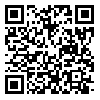Volume 16, Issue 4 (Vol.16, No.4 2021)
irje 2021, 16(4): 343-351 |
Back to browse issues page
Download citation:
BibTeX | RIS | EndNote | Medlars | ProCite | Reference Manager | RefWorks
Send citation to:



BibTeX | RIS | EndNote | Medlars | ProCite | Reference Manager | RefWorks
Send citation to:
Shakeri M, Yousefi R, Gholian Aval M, Salari M, Amini M, Hamedi A. Age Distribution, Trends, and Projections of Under-5 Mortality in Khorasan Razavi province:Time-Series Analyses. irje 2021; 16 (4) :343-351
URL: http://irje.tums.ac.ir/article-1-6870-en.html
URL: http://irje.tums.ac.ir/article-1-6870-en.html
1- Professor of Biostatistics, Social Determinants of Health Research Center, Mashhad University of Medical Sciences, Mashhad, Iran
2- Phd Student of Biostatistics, Student Committee, Mashhad University of Medical Sciences, Mashhad, Iran
3- Assistant Professor, Social Determinants of Health Research Center, Mashhad University of Medical Sciences, Mashhad, Iran
4- PhD of Biostatistics, Mashhad University of Medical Sciences, Mashhad, Iran
5- MSc of Biostatistics, Mashhad University of Medical Sciences, Mashhad, Iran ,aminimaryam2368@gmail.com
6- 6- Medical Student , Student Research Committe, Faculty of Medicine , Mashhad University of Medical Sciences, Mashhad, Iran
2- Phd Student of Biostatistics, Student Committee, Mashhad University of Medical Sciences, Mashhad, Iran
3- Assistant Professor, Social Determinants of Health Research Center, Mashhad University of Medical Sciences, Mashhad, Iran
4- PhD of Biostatistics, Mashhad University of Medical Sciences, Mashhad, Iran
5- MSc of Biostatistics, Mashhad University of Medical Sciences, Mashhad, Iran ,
6- 6- Medical Student , Student Research Committe, Faculty of Medicine , Mashhad University of Medical Sciences, Mashhad, Iran
Abstract: (1850 Views)
Background and Objectives: Investigation of child mortality is one of the most important strategies for improving children's health. The purpose of this study was to investigate the age distribution, trends, and projections of mortality in children under 5 years old in Khorasan Razavi province.
Methods: The study population included under-5 mortality data from Khorasan Razavi Province during 2012-2017 extracted from the Causes and Mortality Classification System of Vice-Chancellery of Health, Mashhad University as well as five universities and faculties. Cause of mortality was classified according to the ICD10 codes. Data were controlled using the ANACod software. Descriptive statistics methods and autoregressive integrated moving average (ARIMA) modeling were applied to explore the mortality trend during the time of study using the Minitab.15 and STATA16.
Results: According to the results, the highest mortality rate for children under five was in 2014 and the lowest in 2017. Using the differencing method, the data were stabilized. Finally, the ARIMA model (1,1,2) was identified as a suitable model using the MINITAB software.
Conclusion: The mortality rate of children under five has declined sharply in the last four years in Khorasan Razavi Province. It is predicted that this reduction will continue according to fitted model. However, we are still far from mortality rates in developed and some developing countries; therefore, efforts should be made to reduce the under-five mortality rate by increasing the level of health services, the awareness level of families, and improving maternal and childbirth care.
Methods: The study population included under-5 mortality data from Khorasan Razavi Province during 2012-2017 extracted from the Causes and Mortality Classification System of Vice-Chancellery of Health, Mashhad University as well as five universities and faculties. Cause of mortality was classified according to the ICD10 codes. Data were controlled using the ANACod software. Descriptive statistics methods and autoregressive integrated moving average (ARIMA) modeling were applied to explore the mortality trend during the time of study using the Minitab.15 and STATA16.
Results: According to the results, the highest mortality rate for children under five was in 2014 and the lowest in 2017. Using the differencing method, the data were stabilized. Finally, the ARIMA model (1,1,2) was identified as a suitable model using the MINITAB software.
Conclusion: The mortality rate of children under five has declined sharply in the last four years in Khorasan Razavi Province. It is predicted that this reduction will continue according to fitted model. However, we are still far from mortality rates in developed and some developing countries; therefore, efforts should be made to reduce the under-five mortality rate by increasing the level of health services, the awareness level of families, and improving maternal and childbirth care.
Type of Study: Research |
Subject:
Epidemiology
Received: 2021/05/21 | Accepted: 2021/03/5 | Published: 2021/03/5
Received: 2021/05/21 | Accepted: 2021/03/5 | Published: 2021/03/5
Send email to the article author
| Rights and permissions | |
 |
This work is licensed under a Creative Commons Attribution-NonCommercial 4.0 International License. |





